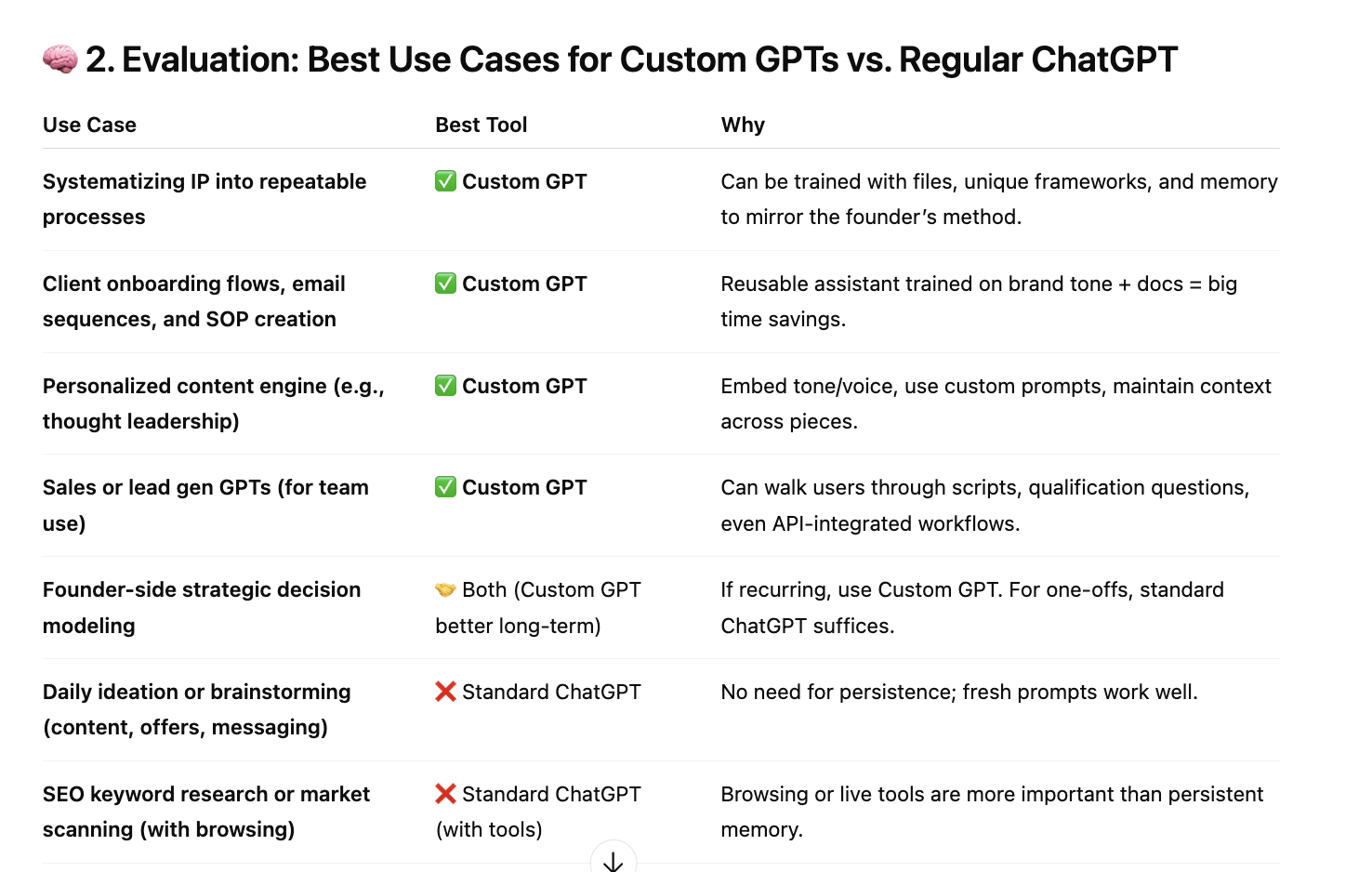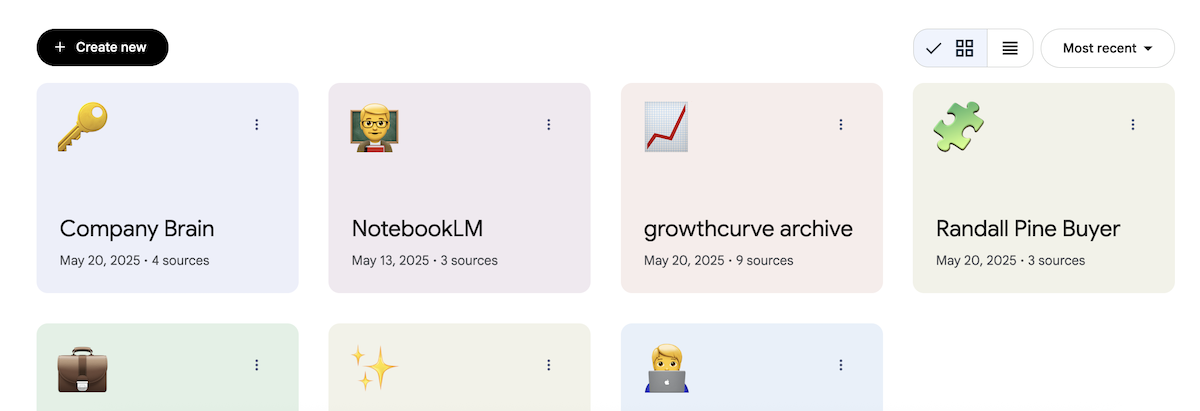Most searches around AI today are focused on use cases: practical, specific ways to apply AI to life and business. It makes sense; many professionals are still wrapping their heads around what AI is capable of and still learning when, where, and how to use AI in their work.

Criteria for good AI use cases
In general, a good time to use AI is on tasks that are:
- Recurring: Tasks completed daily, weekly, or even monthly are good candidates for AI integration. The more frequent and time-consuming the task is, the more long-term savings can be gained.
- Structured: Whether data-driven or following a repeatable series of steps, structured tasks are better suited for AI than unstructured ones.
- Narrow: One concept used in automation is microproductivity — breaking down a task into subtasks so that some of the steps can be automated. Applying microproductivity to AI can be helpful because we may not be able to delegate an entire task to AI (at least not yet), but we can often integrate AI into parts of the process. It's also easier to create an effective prompt once you have a clear outline of the steps involved.
So how do you find these tasks in your day-to-day work?
The 5x5 AI Framework™: Find everyday ways to use AI at work
We created the 5x5 AI Framework to make it easier to find recurring, structured, narrow tasks in your work (or life).
How to follow the 5x5 AI Framework
Step 1: 5 things you do weekly
Create five columns. At the top of each, write down a project or task you do regularly — monthly, weekly, or even daily.

Step 2: 5 steps you take
Beneath each, write down at least five steps to complete that task, starting each step with a verb.
If you need help getting started, use our "RADIC" framework:
- Research (find, survey, curate, source): To find or collect data on a topic.
- Analyze (interpret, summarize, classify, simplify): To interpret or find patterns in data.
- Decide (evaluate, judge, select): To make a choice or recommendation based on data.
- Innovate (brainstorm, ideate, remix): To combine or reimagine ideas in a new way.
- Create (write, code, design, generate, personalize): To make something new — whether text, audio, video, image, or code.
Most professionals perform these tasks throughout the course of their work. For example:
A content marketer writing a blog post = Researches a new topic, analyzes their findings, creates an outline, creates the blog post.
A salesperson working a lead = analyzes their CRM data, researches a lead, creates a follow-up email.
A CEO preparing for an upcoming all-hands meeting = analyzes the latest financial forecasts, decides on the company’s Q3 priorities, creates their notes for the agenda.

Take a step back from your work to think about what it is you really do. Critically analyze the steps you take — perhaps unconsciously, if you perform the task often enough —then consider how AI might help boost your efficiency, creativity, or performance.
Step 3: 5 ways to insert AI
Now circle the steps that could be completed by AI. Aim for five AI use cases that you can further evaluate and execute.

Let’s look at an example.
The 5x5 AI Framework in action
You are a small business owner. You run an early-stage SaaS startup where you have a hand in guiding the overall company vision, finances, operations, product roadmap, and marketing. On top of this, you often take the lead on hiring, sales, and customer success. Here’s what your 5x5 AI Framework might look like.
5 things you do weekly
First, write down five tasks or projects you might perform weekly or monthly:
- Product: Guide the product roadmap
- Sales: Work your lead pipeline
- Marketing: Manage content marketing
- Marketing: Manage personal LinkedIn profile
- Customer Sucess: Keep a pulse on customer satisfaction
5 steps you take
Next, list five (or more) steps you take to complete each project. Try to start as many steps as possible with “RADIC” verbs.
Product Roadmap
- Analyze user feedback and feature requests.
- Research industry trends and competitor offerings.
- Brainstorm and ideate new features.
- Prioritize features based on impact and feasibility.
- Send meeting request to discuss roadmap with engineering team.
Sales
- Analyze current sales pipeline.
- Research current leads and analyze ideal customer profile fit.
- Create personalized follow-up email to leads.
- Create updated sales presentation and demo notes.
- Present demo to each lead.
- Summarize post-demo notes for CRM.
Content Marketing
- Analyze keyword trends and search volume.
- Research trending topics relevant to our product/industry.
- Brainstorm blog post titles and content ideas.
- Create blog content targeting relevant keywords.
- Publish blog post.
- Create social media posts to promote new blog post.
- Schedule social media posts.
Personal LinkedIn
- Review notification and messages.
- Create responses to messages.
- Create and post comments on peers’ posts.
- Brainstorm topics for LinkedIn posts.
- Create LinkedIn post.
- Publish LinkedIn post.
- Analyze engagement analytics on most recent posts.
Customer Success
- Analyze usage data to identify at-risk customers.
- Personalize email to at-risk customers and offer support.
- Run customer check-in calls to discuss feedback.
- Curate feedback from customer calls and analyze to identify areas for improvement.
- Create wish list of educational resources and tutorials to better support customer success.
Of course, there may be even more steps involved in each of these projects. The objective, though, is to document your systems and processes, so you can begin to insert AI in your workflows.
5 ways to insert AI
Lastly, mark any steps that could incorporate AI. Based on today’s generative AI chatbots — ChatGPT, Gemini, Claude, etc. — this small business owner just uncovered as many as 21 AI use cases.
Let’s take a look.
Product Roadmap
- Analyze user feedback and feature requests.
- Research industry trends and competitor offerings.
- Brainstorm and ideate new features.
- Prioritize features based on impact and feasibility.
- Send meeting request to discuss roadmap with engineering team.
Sales
- Analyze current sales pipeline.
- Research current leads and analyze ideal customer profile fit.
- Create personalized follow-up email to leads.
- Create updated sales presentation and demo notes.
- Present demo to each lead.
- Summarize post-demo notes for CRM.
Content Marketing
- Analyze keyword trends and search volume.
- Research trending topics relevant to our product/industry.
- Brainstorm blog post titles and content ideas.
- Create blog content targeting relevant keywords.
- Publish blog post.
- Create social media posts to promote new blog post.
- Schedule social media posts.
Personal LinkedIn
- Review notification and messages.
- Create responses to messages.
- Create and post comments on peers’ posts.
- Brainstorm topics for LinkedIn posts.
- Create LinkedIn post.
- Publish LinkedIn post.
- Analyze engagement analytics on most recent posts.
Customer Success
- Analyze usage data to identify at-risk customers.
- Personalize email to at-risk customers and offer support.
- Run customer check-in calls to discuss feedback.
- Curate feedback from customer calls and analyze to identify areas for improvement.
- Create wish list of educational resources and tutorials to better support customer success.
More than 20 AI use cases in just a few minutes — and depending on AI-powered features in their tech stack, this number could be even higher.
As you complete this exercise for yourself, you might evaluate these use cases further (learn how to do that here) and decide not to use AI for many, or even most of them.
But what about the rest? Even if you add AI to just five of these weekly tasks, how much time will that save you each week? Each month?
How much time could you get back each year?
To try the 5x5 AI Framework for yourself, download this free template.
Why use this framework?
The 5x5 AI Framework can help you:
- Identify tasks you repeat often.
- Break down projects and tasks into smaller steps.
- Recognize the structured tasks and processes in your everyday work.
- Isolate steps that could incorporate AI.
In short, use this simple framework to find everyday ways to use AI at work.
Want us to teach the 5x5 AI Framework at your company? Get in touch with us.
Fast-track your company's responsible AI adoption with The 30-Day AI Ops Jumpstart.
Our team can help to help you:
- Pinpoint the best use cases for your company.
- Identify potential AI pilot projects.
- Standardize and centralize your top use cases in a prompt library.
- Develop a plan to put AI into action.






